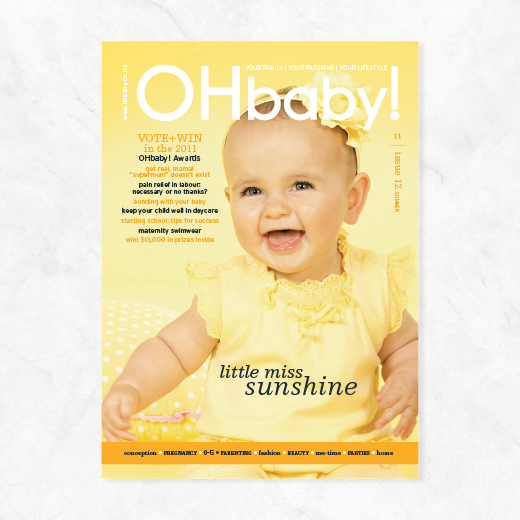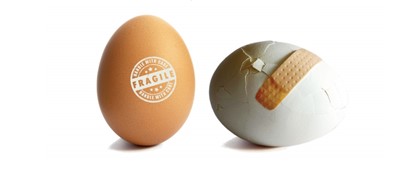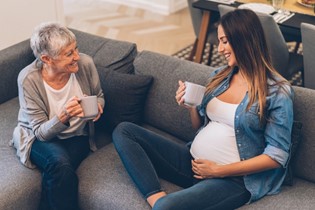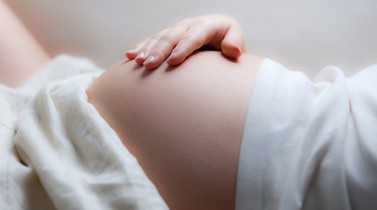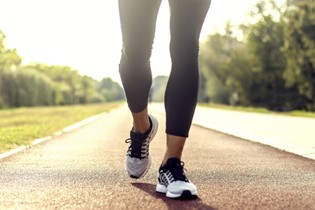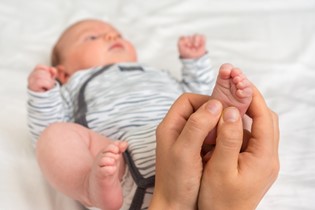Why walking is so good for your pregnancy
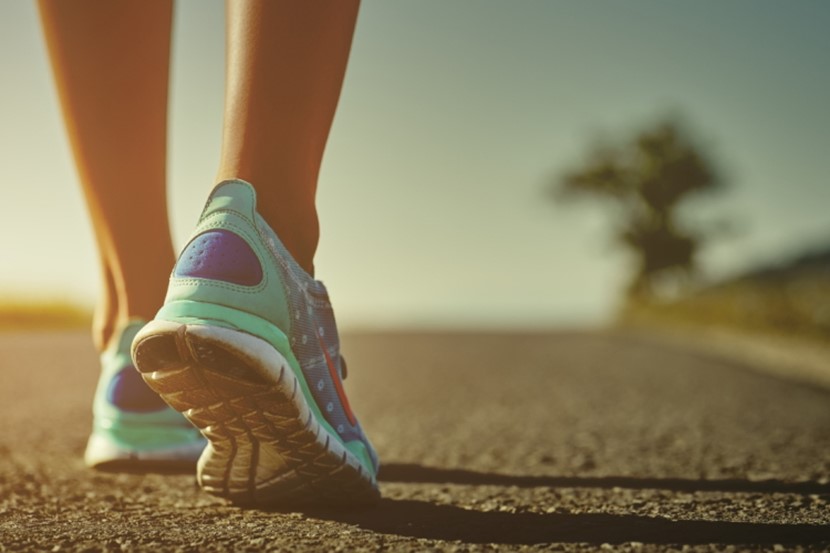
Exercise during pregnancy can seem a little daunting. Being a "baby factory" is exhausting in itself, without the pressure of extracting yourself from the sofa to pound the pavements! However, research reveals numerous benefits of exercising during pregnancy. Once you know the basic guidelines, it can be as simple as grabbing your trainers and going for a walk.
The benefits of exercise are well proven, and include lowering blood pressure, protecting against heart disease, helping to maintain a healthy weight, improving bone mineral density, and reducing the risk of developing colon and breast cancers. The Royal College of Obstetricians and Gynaecologists now suggest that all women should be encouraged to participate in aerobic and strength-conditioning exercise as part of a healthy lifestyle. Just 30 minutes of exercise on most, if not all, days of the week can result in:
👟 Improved circulation (which may help with varicose veins and swollen calves)
👟 A reduction in pregnancy aches or discomforts such as back pain and constipation
👟 Improved muscle tone
👟 Reduced fatigue and improved energy levels
👟 Improved quality of sleep
👟 Enhanced self-esteem and a more positive body image
👟 Increased production of "feel-good" hormones to help stave off depression
👟 Reduced risk of developing gestational diabetes.
If that isn't enough to persuade you to find your trainers, then remember that exercise also helps to build stamina and improve your ability to cope during labour, not to mention improving your ability to get back in to shape once baby has been born. It is now also considered safe that even previously sedentary, but healthy, women can start an exercise programme during pregnancy.
If you are pregnant and still reading, then congratulations - you've taken the first step towards a healthier pregnancy, not to mention looking good and feeling energised. But you may still be wondering exactly how hard, how long, and how often you should exercise. Let's have a look at some of those issues and simplify things so you can really start flowing!
A simple stroll
Pregnancy is certainly not the time to commence any form of extreme or complicated exercise regime. And while attending pregnancy-specific aerobics, pilates, yoga, or aqua-natal classes can be beneficial, they don't always fit in with the family or the budget. Simply walking on a regular basis can provide you with many of the positive benefits mentioned above. Walking is not only inexpensive, but also low-impact, meaning less strain on your joints and less chance of injury.
First trimester: Start as you mean to go on
If you are planning a pregnancy, then it is wise to still adhere to the following exercise recommendations as you may become pregnant and not know it yet. Always check with your LMC or doctor before commencing any exercise programme. This is just to ensure you have no risk factors that may inhibit your ability to exercise while pregnant. These may include things such as a history of premature labour, miscarriage, problems with your cervix or placenta, anaemia, vaginal bleeding, severe joint pain, and some chronic diseases.
Keep abreast of the situation
Before you commence, it is vital you have a well-fitted, supportive bra to protect enlarging breast tissue. While every woman is different, it is not uncommon for breasts to increase up to a cup size or more throughout pregnancy, and the delicate tissue needs to be supported, even with walking. It is advisable to avoid underwire bras as these can become uncomfortable and may contribute to blocked ducts, especially if they don't fit perfectly. You may prefer a traditional soft-cup sports bra, and some women find that wearing two bras (or a small crop top over a bra) will reduce their discomfort while exercising.

Feet first
Supportive walking shoes are vital for ongoing comfort and support for the arches of your feet. Hormones that are released during pregnancy to help soften the joints of the pelvis can also affect the feet. Many women make the mistake of wearing shoes without enough arch support. Softening ligaments, coupled with increased weight gain can lead to fattening of the arches and increased foot pain. Shoes designed specifically for walking may be a good choice during pregnancy. Some women even find that their feet go up half a size during pregnancy, so if purchasing shoes during pregnancy - consider going slightly larger.
Let's get started
If you have maintained a regular walking programme prior to pregnancy, then a reasonable goal would be to maintain a good fitness level without trying to reach peak fitness. Aim for around 30 minutes of moderate intensity walking on most, if not all, days of the week. If you haven't done any recent exercise, then begin with around 15 minutes continuous walking around 3-4 times per week, and gradually build up to 30 minutes, 5-7 days per week.
A warm-up is more important during pregnancy and can be as simple as walking at a slower pace for about the first five minutes. This will allow time for your heart to pump blood around your body, ensuring sufficient oxygenation for your working muscles, and for your baby. By starting out at a gentle pace you are also less likely to injure your joints. A cooling-down period at the end of your walk is also important - so slow down the pace for 3-4 minutes at the end of your work-out; to allow the cardiovascular system time to adjust to the change in pace of activity.
Some basic leg stretches after your walk are a good idea,specifically your thighs, hamstrings, and the long and short calf muscles. Aim to hold each stretch for at least 30 seconds. You should feel a stretching sensation, not pain.
Listen to your body
Without individual assessment it is difficult to be prescriptive about the intensity of a programme. The most important factor here is that we are aiming for a moderate level of exertion - not over-doing things or pushing yourself too hard. You should be able to hold a conversation, talking comfortably or with a moderate effort but certainly without gasping or feeling unable to talk. Due to an increase in resting heart rate and decrease in maximal heart rate during pregnancy, using target heart-rates as a guide of exercise intensity is not recommended.
Up to 70% of pregnant women unfortunately experience morning sickness. Try to be sensible; if you've been throwing up all morning then it may pay to rest in the afternoon. On the other hand, if you feel only mildly queasy, then a light walk in the fresh air may actually be just the thing you need. Try and take some deep breaths while walking, as this will improve oxygenation and aid with relaxation of your muscles.
You are always the best judge of how you are feeling. If you are unwell or have a fever, then don't exercise. If you feel unwell while walking, are short of breath, develop any pain in your pelvis or back, or have any unusual symptoms, then stop exercising and seek advice from your LMC. Never exercise on an empty stomach - you need fuel from food to exercise as your baby requires this energy to grow. So aim to eat regular meals ----- and have a healthy snack on hand at all times.

One of the most important considerations when exercising during the first trimester is to avoid overheating. Both exercise and pregnancy raise your metabolic rate and core temperature - which, if left unchecked, could affect the baby's development. To avoid overheating, ensure you drink frequently before, during, and after exercise and avoid exercising on very hot or humid days.
The second trimester: Get glowing
This is the time most women feel at their physical best during pregnancy, as energy levels and nausea tend to improve. Concentrating on your posture while walking will help to engage your core muscles and may even help to prevent lower back pain. Walk tall and imagine a piece of string attached to the top of your head lifting your taller. Try "hugging" baby towards your spine by slightly flattening your lower abdomen, but DON'T hold your breath. Remember, this is subtle, and holding your tummy in too tightly can do more harm than good. Try to keep your arms and shoulders relaxed. You can check this regularly by shrugging your shoulders up to your ears and letting them go again.
If you feel like an extra challenge and would like to tone your arms a little, try walking with some light 1-2kg hand weights.
Third (and final!) trimester
Well done on exercising throughout the first two thirds of your pregnancy, you are now on the home straight. Healthy pregnant women can continue to walk up until their due date. If you are able, continue with your 5-6 times per week walking programme.
As the baby grows, don't be surprised if you feel a little uncomfortable at times as your expanding uterus can compress your organs, including your lungs. In addition, if you start to feel any sharp pains or aching in your pubic bone, your upper thighs or your lower back, then don't hesitate in seeing a women's health physiotherapist - they will be able to assess the problem and modify your exercise accordingly.
Despite the best shoes and adequate rest, most pregnant women will experience foot pain at some point in the final trimester. Try applying hot or cold packs, foot massage, remove your shoes and elevate your legs, and avoid high heels and any high impact exercise. If the foot pain persists, consider seeing a physiotherapist or podiatrist who specialises in pregnancy care.
Walking, not waddling
In the later months of pregnancy, many women develop a characteristic waddling gait. This is often due to changes in their posture and centre of gravity. When this happens, the gluteal (bottom) muscles tend to get "left behind", so to speak. Avoid waddling by staying tall, gently "hugging" your baby (as mentioned above), and engage your gluts by squeezing your buttock as you extend each thigh.
If you are finding that your bulging abdomen is becoming uncomfortable while walking, you might want to continue your walking programme in the water. Just be sure that the temperature of the water doesn't exceed 28-29 degrees celsius, to help avoid overheating.
Engaging, isn't it?
Any time from about 37 weeks your baby may "drop" or the head may start to engage in your pelvis. Sometimes this puts extra pressure on your pelvic joints, which can make walking feel a little strange. You may also experience occasional electric shock sensations, but this is usually just due to the pressure of the baby's head in your pelvis. As long as it doesn't bother you too much, you can usually continue walking. If in doubt, always speak with your LMC or women's health physiotherapist.
If you've managed to walk regularly throughout your pregnancy, then give yourself a pat on the back. Along with all the health benefits, you will have improved your stamina to help you manage during labour, as well as preparing yourself physically for the demands of motherhood.
Lisa Yates is a mother of two young girls and an experienced physiotherapist with a special interest in women's health. She walked and swam during both her pregnancies and still enjoys walking with her girlfriends along the beautiful Taranaki coastline.

AS FEATURED IN ISSUE 12 OF OHbaby! MAGAZINE. CHECK OUT OTHER ARTICLES IN THIS ISSUE BELOW
